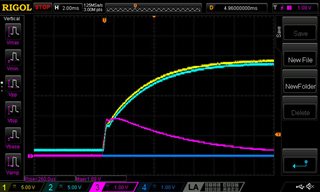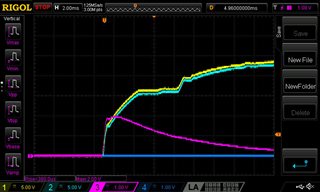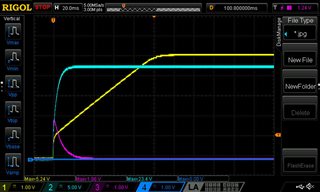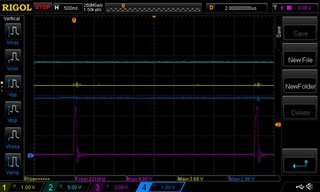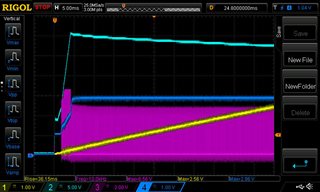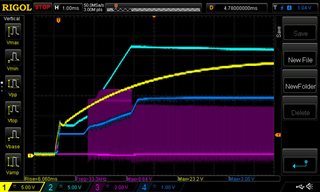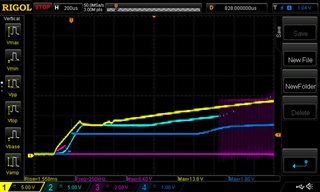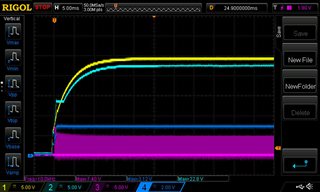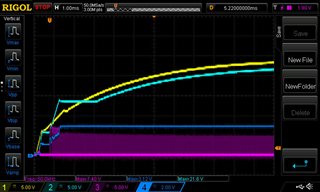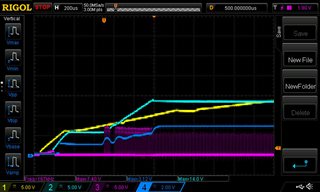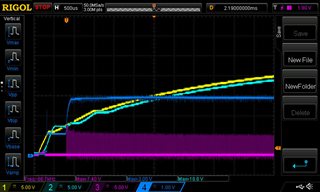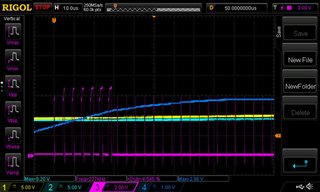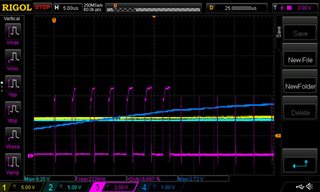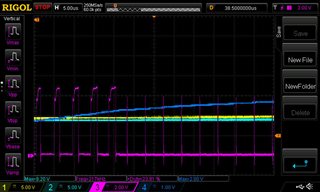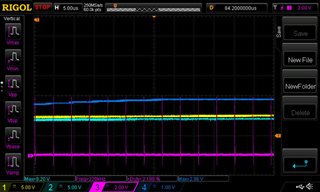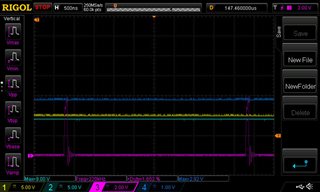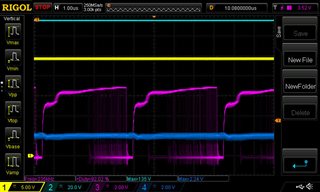Hi,
I need a +/-135VDC power supply (at around 30-35mA for each output) for one of the our projects.
I thought of using LM5155 in flyback and boost topologies.
I've built an eval. board (see attached pdf) for both configurations to proof the concept before using them in project, but non of them even start.
I tried different values for RT and SS pins, connected UVLO directly to BIAS and for flyback configuration added and optional PNP transistor on primary side as shown in data sheet.
I saw recommendations on using zener on the secondary side for flyback configuration, but didn't try it yet since the boost topology, where there is no secondary side, does not start as well.
Also, tried bypassing EMI filter.
No luck, I just can not get them started for both configurations.
Can you please check the schematics, what can be wrong there ?
Thanks !


